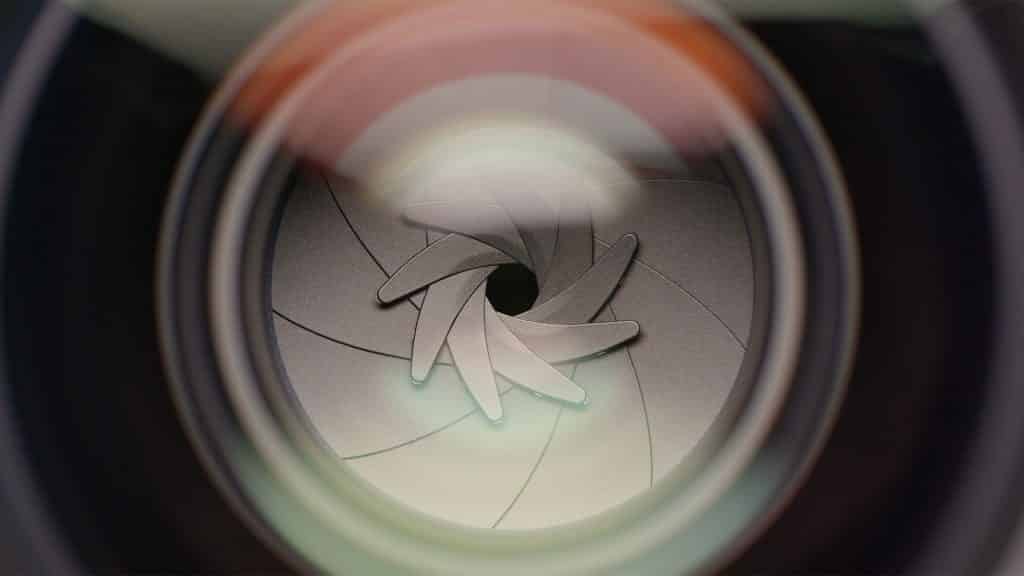In photography, a telephoto lens is a type of camera lens designed to frame distant subjects. When combined with a DSLR camera or another type of camera that supports interchangeable lenses, a telephoto lens allows you to capture images of distant objects with great detail and clarity. But, what exactly is a telephoto lens? And how is it used? Let’s look at it in more detail.
What is a telephoto lens?
A telephoto lens is a camera lens with a large focal length, which allows capturing images of distant objects. Telephoto lenses are often used in sports and wildlife photography, as they allow you to photograph subjects at a distance without having to physically get close to them.
Telephoto lenses have different focal lengths, from short (85 mm) to super telephotographic (starting from 400 mm).
The focal length of a telephoto lens is measured in millimeters (mm), and the higher the number, the greater the focal length and the magnification. For example, an 85 mm lens will have less magnification than a 200 mm lens.
How is a telephoto lens used?
Telephoto lenses are generally used for two purposes: photographing subjects at a distance and achieving a shallow depth of field.
When photographing subjects at a distance, it is important to keep your hands as steady as possible to avoid blurry images. One way to do this is to use a monopod or a tripod. If you don’t have any of these devices, you can try leaning on a wall or another object for support.
To achieve a shallow depth of field, i.e., to have the subject in focus while the background is blurry, you will need to use a wider aperture setting (a lower f-stop number). This will allow more light into your camera, which in turn will allow you to use a faster shutter speed. A fast shutter speed is important when photographing moving subjects, as it will help to prevent blur.
Types of telephoto lens
As a photographer, it’s important to have a variety of lenses at your disposal so you can capture the perfect shot no matter the situation. In terms of lenses, telephoto lenses are some of the most versatile because they allow you to take pictures of subjects that are far away.
Zoom or fixed focal length
Fixed focal length
The first type of telephoto lens is the prime lens. Prime lenses have a fixed focal length, which means they cannot zoom in or out. Although this may seem like a disadvantage, fixed focal length lenses have some advantages.
They usually have wider apertures than zoom lenses, which means they let in more light and produce sharper images. Additionally, they are smaller and lighter than zoom lenses, so they are more portable.
Zoom
The next type of telephoto lens is the zoom lens. Zoom lenses get their name from their ability to zoom in and out, giving you more flexibility when framing your photos. One of the advantages of zoom lenses is that you don’t have to constantly change position to get the right shot. However, zoom lenses are typically larger and heavier than fixed focal length lenses, and they usually have narrower apertures, meaning they let in less light.

According to their focal length
Standard Telephoto Lens
A standard telephoto lens has a focal length that is double the length of the camera’s field of view. For example, if your camera has a field of view of 50 mm, a standard telephoto lens would have a focal length of 100 mm. Standard telephoto lenses are ideal for portraits as they allow you to capture the subject with great detail and maintain a natural perspective. However, if you’re going to photograph landscapes or architecture, you may want to consider a lens with a greater focal length to be able to capture more of the scene in the frame.
Long Telephoto Lens
Long telephoto lenses have focal lengths that are four times the length of the camera’s field of view or more. So, if your camera has a field of view of 50 mm, a long telephoto lens would have a focal length of 200 mm or more. These lenses are often used by sports and wildlife photographers who need to be able to capture subjects in fast motion from a distance. Long telephoto lenses are also useful for getting close-ups in tight spaces where it’s not possible to physically get close to the subject.
Super Telephoto Lens
Super telephoto lenses have focal lengths eight times greater than the length of the camera’s field of view. So, if your camera has a field of view of 50 mm, a super telephoto lens would have a focal length of 400 mm or more. These lenses are typically used by photographers who need to capture subjects that are very far away, such as birds in flight or animals in the wild. They are also frequently used by paparazzi and other photographers who need to be able to take candid photos from a distance without being noticed.
What uses does a telephoto lens have?
Have you ever wondered how those stunning wildlife or landscape photographs were taken? Chances are, the photographer used a telephoto lens.
At this point, we will explore what telephoto lenses are, the different types of photography they are used for, and why they are so beneficial. So, if you’ve ever been curious about these types of lenses, keep reading!
Wildlife Photography
One of the most popular uses of telephoto lenses is wildlife photography. These lenses allow photographers to capture stunning close-ups of animals in their natural habitat without disturbing them.
For example, a photographer using a 400 mm telephoto lens can photograph a flying eagle over 100 meters away. This not only ensures the safety of the photographer, but also ensures that the animals are not disturbed.

Sports Photography
Telephoto lenses are also commonly used in sports photography. These lenses allow photographers to capture fast-action images from a distance, providing a clear view of athletes and the game.
For example, when photographing a soccer match, a 600 mm telephoto lens will allow the photographer to capture sharp images of players from the sidelines.

Landscape Photography
In addition to wildlife and sports photography, telephoto lenses can also be used for landscape photography. These lenses allow photographers to capture wide views that wouldn’t be possible with lenses of shorter focal lengths.
For example, when photographing mountain ranges or vast open plains, a 200 mm telephoto lens will provide a sharp and distortion-free image.
Telephoto lenses are versatile tools that can be used for various types of photography. From wildlife to sports and landscape photography, these lenses provide sharp, distortion-free images from a distance. If you are interested in exploring any of these genres, we recommend investing in a quality telephoto lens.
How to use a telephoto lens to modify the depth of field?
A telephoto lens is any lens with a focal length longer than the diagonal measurement of the sensor or film with which it is used. This gives the lens a narrower field of view than a standard lens, which makes the foreground and background appear compressed.
This compression can be used to create a sense of distance and depth, or to make a small subject appear large.
There are many different situations where a telephoto lens can be used. Landscape photographers often use telephoto lenses to compress foreground and background elements of a scene, which can help to create a sense of scale.
But telephoto lenses can also be used for more creative purposes, like portrait and close-up photography. When used at shorter focal lengths (85mm or less), telephoto lenses can produce a nice bokeh effect, i.e., a pleasant blurry background effect that helps the subject stand out from the rest of the image. And when used at very long focal lengths (200mm or more), they can produce “miniature” effects in which everything, except the subject, appears miniature due to the extreme compression caused by the long focal length.
There you have it: a brief introduction on how to use a telephoto lens to modify the depth of field and produce emotions in the viewer. Next time you go out to take landscape or portrait photos, try one of these techniques and see how it affects your photos.
The 6 best telephoto lenses and their features
Here are 4 zoom telephoto lenses and 2 fixed focal length telephoto lenses that you should consider if you’re thinking about buying one:
Zoom telephoto lenses
Canon EF 100-400mm f/4.5-5.6L IS II USM lens
This Canon telephoto lens is one of the best on the market, thanks to its impressive focal length range of 100-400mm and built-in Image Stabilization technology. This lens also features an ultra-quiet Ultrasonic Motor (USM) making it ideal for video recording as well as photography.
Nikon AF-S Nikkor 200-500mm f/5.6E ED VR lens
This Nikon telephoto lens is a great option for those wanting to capture images of wildlife or sports. It has a fixed maximum aperture of f/5.6, which may not be ideal for low light situations, but more than makes up for it with its impressive 500mm focal length.
Sony FE 100-400mm f/4.5-5.6 GM OSS lens
If you’re looking for a high-quality telephoto lens for your Sony camera, look no further than the FE 100-400mm GM OSS lens. This lens is perfect for both photography and video thanks to its Optical SteadyShot image stabilization system and powerful autofocus motor.
Panasonic Lumix G Vario 100-400mm f/4-6.3 ASPH Power OIS lens
Completing our list of the best telephoto lenses on the market, this Panasonic lens is a great option for those wanting a versatile all-in-one solution thanks to its 100-400mm focal length range and compact design. It is also relatively affordable compared to some of the other lenses on our list.
Fixed focal length telephoto lenses
Canon RF 600mm f/11 lens
The Canon RF 600mm f/11 lens is a professional-level telephoto lens that offers excellent image quality and robust build quality. It features a fast and silent autofocus system and is compatible with both full-frame and APS-C cameras.
It has a maximum aperture of f/11 and a minimum focusing distance of 2.5 m. Additionally, it features an Image Stabilization system that reduces camera shake by up to 4 stops.
Nikon AF-S Nikkor 600mm f/4E FL ED VR lens
The Nikon AF-S Nikkor 600mm f/4E FL ED VR lens is another great option for professional photographers. It offers excellent image quality and sharpness, as well as fast and precise autofocus.
It has a maximum aperture of f/4 and a minimum focusing distance of 2 m. It also features an integrated Vibration Reduction system that reduces camera shake by up to 4 stops.
These are the 2 best fixed focal length telephoto lenses and their features. Do you have a favorite telephoto lens? Share your opinion in the comments section below.








